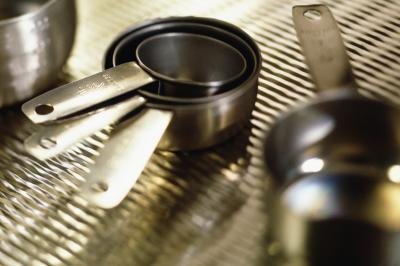
Although you might be tempted to try diets that promise fast weight loss, you're better off losing weight at a slow, steady pace. To ensure you're losing fat and not muscle or water, lose no more than 2 pounds a week, according to the American Academy of Family Physicians. A healthy meal plan that helps you limit your calorie intake and includes a variety of foods from all of the food groups can set you on a path to a thinner and healthier you.
Step 1
Determine your calorie needs for weight loss. Before starting your diet, keep a three- to seven-day food diary to estimate your usual daily calorie intake. To lose 1 pound a week, you need to create a calorie deficit of 3,500 calories. That means you'd need to subtract 1,000 calories from your daily calorie intake to lose 2 pounds per week. For example, if you currently eat 2,400 calories a day, you need to decrease your daily calorie intake to 1,400 calories.
Step 2
Divide your weight-loss calorie needs between three meals and one snack. Each meal should contain about the same number of calories to help keep energy levels up while aiding in hunger control. On a 1,400-calorie weight-loss diet, each meal should contain 400 calories.
Step 3
Create meals that include fruits and vegetables, whole grains, lean meat or meat alternatives and low-fat or nonfat dairy foods. Eating a variety of foods from all the food groups at each meal helps ensure you meet your essential nutrient needs. For example, a 400-calorie nutritious and balanced breakfast might include a two-egg omelet stuffed with 1 ounce of low-fat cheese and 1/2 cup of cooked spinach with one slice of whole-wheat toast and one small orange. Food labels, a calorie-counting book or an online food tracker can help you count calories to stay on track.
Step 4
Limit your snack to 200 calories or less. Include nutrient-rich foods, such as fruits, vegetables or low-fat dairy foods, to help boost your vitamin and mineral intake.
Step 5
Reduce your intake of empty calories. Foods like soda and sweets are high in calories and offer very little nutritional value. Instead, drink water or sugar-free beverages such as unsweetened tea or coffee, and limit your sweets to once or twice a week.





No comments:
Post a Comment